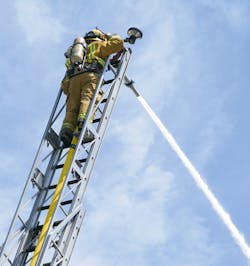Pump Guy Mailbag: Specifying pipe diameters for pump systems
Hi Larry,
There is much information about pumps in Flow Control magazine and on the Internet. However, I see nothing about specifying pipe diameters for pump systems. What is the magic formula to determine the pipe size for a given pump?
Thanks for your response.
Floyd W.
###
Hello Floyd,
There is no magic formula to specify pipe diameter. However, I can say that pipe diameter is normally a function of the desired velocity of the liquid moving through the pipe.
4-6 ft/second is Standard Liquid Velocity
For most common liquids that flow approximately like water (wastewater, orange juice, gasoline, penetrating oil, soy sauce, milk, paints, rum, brine, mild chemicals, fabric softener, diesel fuel, vodka, etc.) with no solids, industry seems satisfied with a liquid velocity between 4 and 6 feet per second. Slower is usually better. Higher velocity should be supported with added information.
Reduced Pipe Velocity
If the liquid can change properties with turbulence or agitation, the engineer might specify a velocity of 2 or 3 feet per second with larger diameter pipe. Here are two examples.
Beer or another carbonated beverage might lose the CO2 gas if the liquid is agitated and sheered at high velocity through pipes, elbows and nozzles. No one wants a flat beer or soda pop.
READ ALSO: Quiz Corner—Velocity in Different Pipe Sizes
Turbulence can cause some detergents to foam and produce bubbles. You don’t want bubbles and foam at the packaging/bottling operation in a dishwashing detergent factory. So, to protect the product from changing or losing properties, the engineer might specify larger diameter pipe that produces lower velocity and no foam.
Increased Pipe Velocity
Crude oil comes from the ground with high concentrations of rocks, sand and dirt. Water, with rocks and dirt, must be pumped from the bottom of most mines. The rocks and solids can settle and form a dam in the pipe with low velocity.
Then, the engineer might specify pipe with a reduced diameter for higher velocity. If the application calls for pumping a liquid with heavy solids, the engineer will specify the pipe diameter that produces a velocity of 17 ft/second or 20 ft/second
A fireman needs to put large quantities of water on a fast-moving apartment fire. But a single firefighter could never lift a 4" fire hose, or control the spray of a 4" fire hose while hanging onto a ladder. So, to climb a ladder and put large quantities of water onto a fire, the fireman uses a small diameter fire-hose with high velocity.
Liquid velocity and the needs and goals of the application normally determine the pipe diameter. I hope this answers your question?
Regards,
The Pump Guy
The next Flow Control Pump Guy Seminar will be presented Jan. 12-14 in La Porte, Texas. For more details and to register, visit flowcontrolnetwork.com/pumpguy or contact Ashley Davidson at 205 995-1593 or via email [email protected].
The Pump Guy is Larry Bachus, a pump consultant, lecturer, and inventor, based in Nashville, Tennessee. He’s a retired member of ASME, and lectures in both English and Spanish. You can contact him at [email protected].


